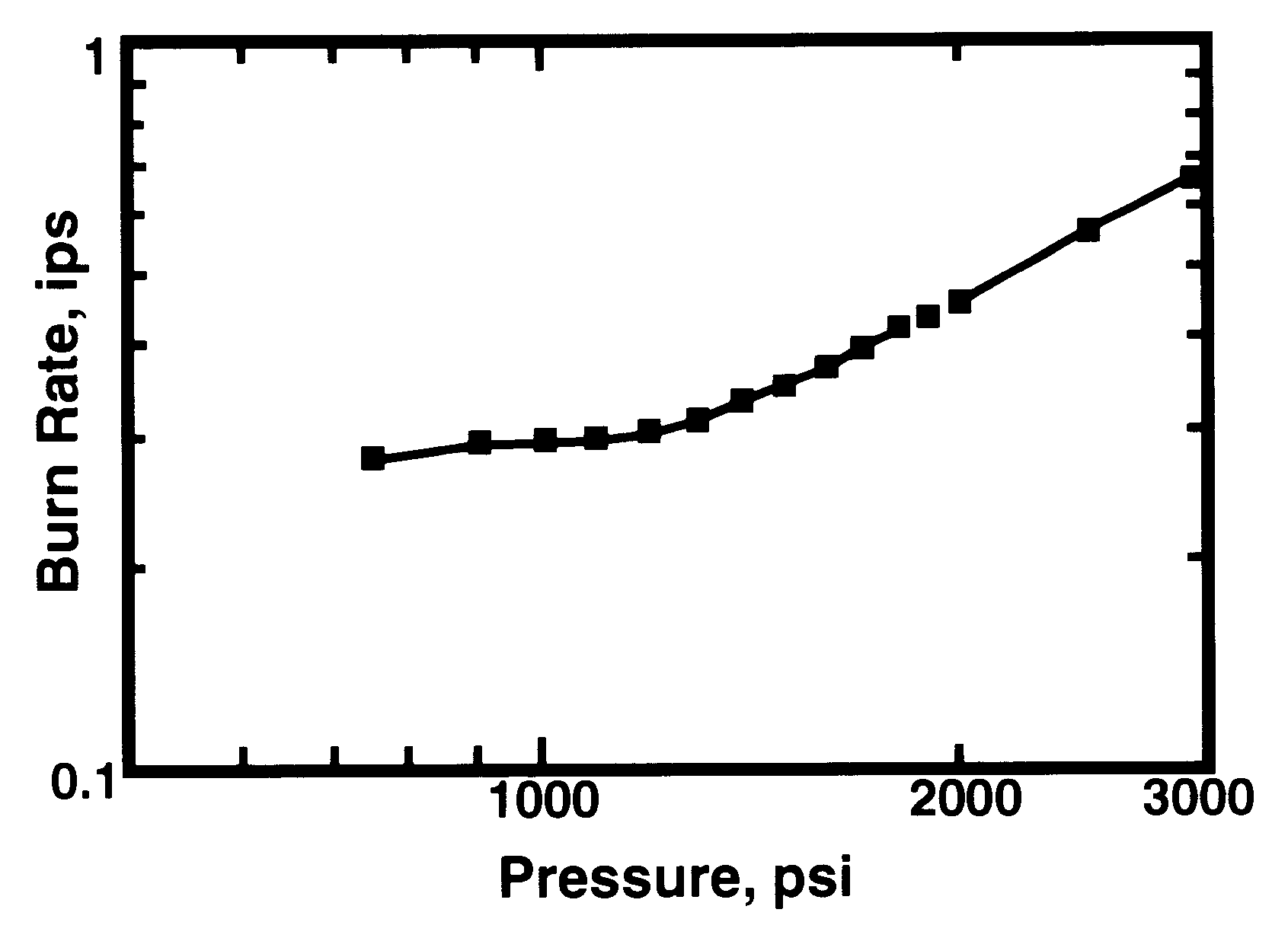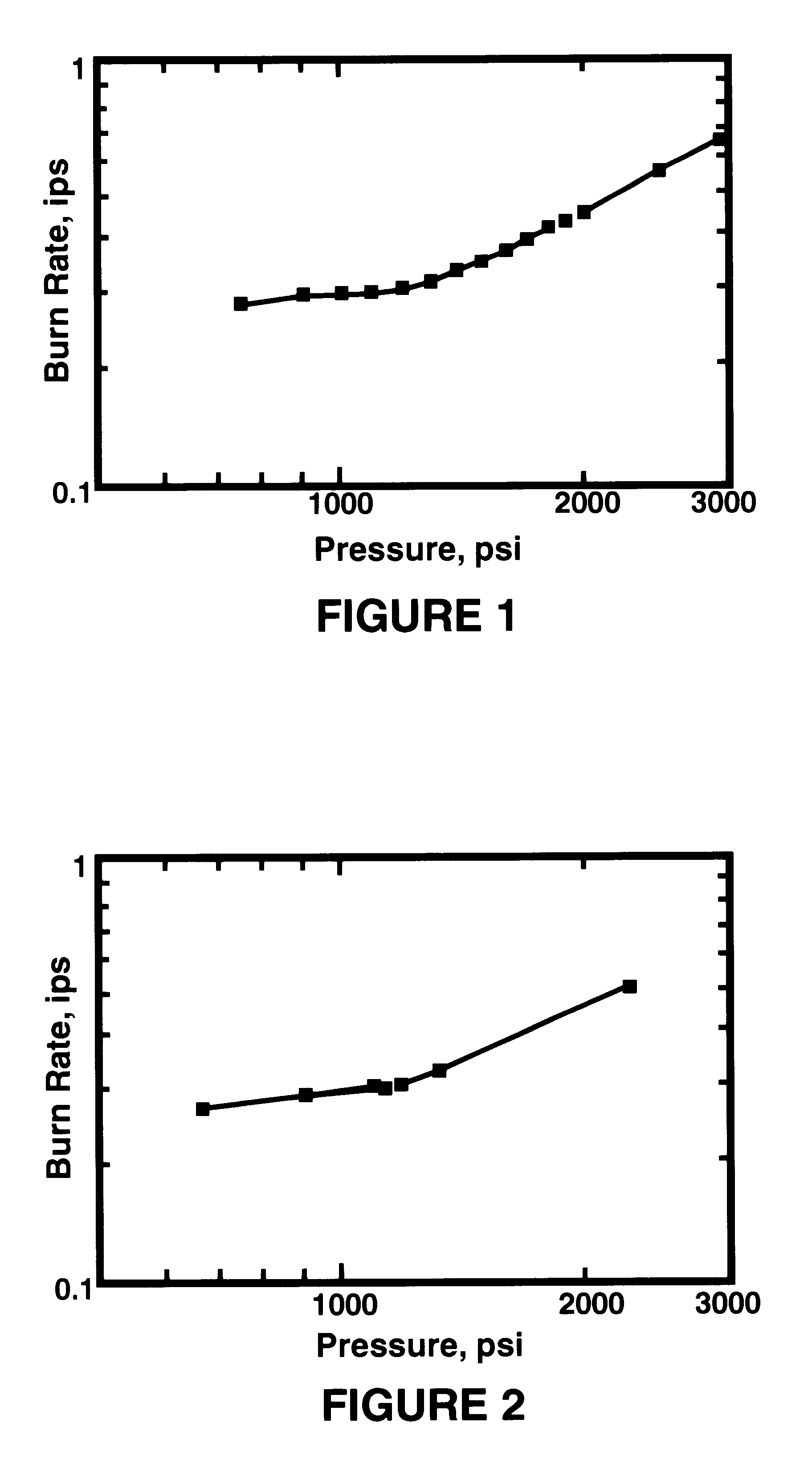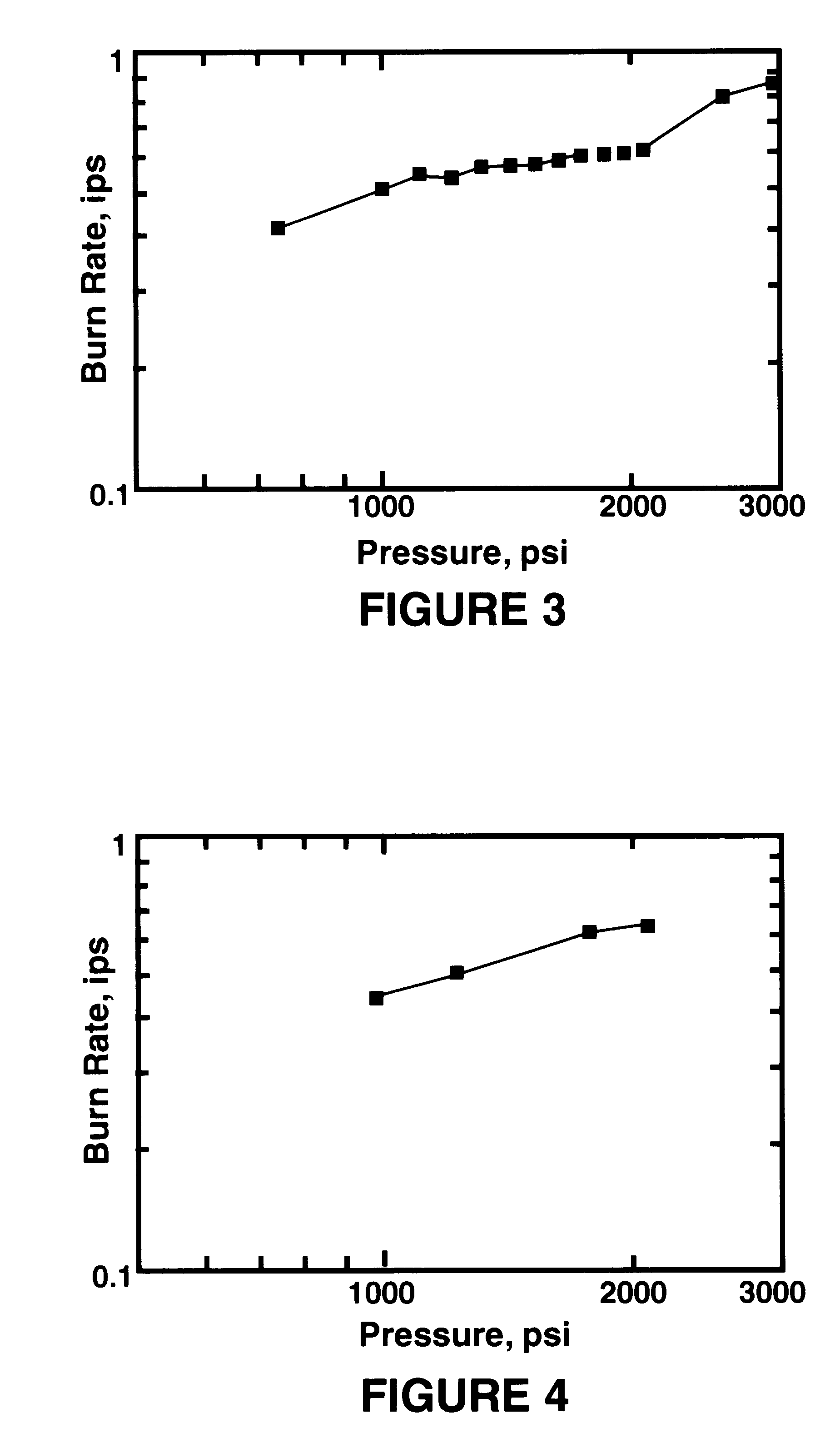Minimum signature isocyanate cured propellants containing bismuth compounds as ballistic modifiers
a technology of isocyanate and propellant, which is applied in the direction of weapons, non-explosive/non-thermal compositions, explosives, etc., can solve the problem that the efficiency of bismuth citrate is only slightly less than that of bismuth salicylate, and achieve the effect of enhancing propellant burning rate and mechanical properties, and enhancing propellant performance impuls
- Summary
- Abstract
- Description
- Claims
- Application Information
AI Technical Summary
Benefits of technology
Problems solved by technology
Method used
Image
Examples
Embodiment Construction
Notes:
1.0 POLYMERS-ORP-2 or 9DT-NIDA are the preferred polymers. The polymer percentage can be as low as six percent for 9DT-NIDA and seven percent for ORP-2. These are the lower limits for good mechanical properties; higher polymer concentrations may reduce propellant performance, but ballistic properties will not vary greatly.
2.0 PLASTICIZERS-A combination of BTTN and TMETN is preferred for performance Isp 245 to 250 seconds. A 70 to 30 percent blend of BTTN and TMETN is preferred with an approximate Pl / Po ratio from 3.3 to 3.7. Desirable properties can be achieved with all nitrate ester plasticizers.
3.0 CARBON BLACK--Sterling R carbon used with ZrC and the bismuth compound gave the best ballistic properties in these evaluations. The significant feature of the Sterling R carbon versus Thermax carbon is a smaller average particle size. Other carbons of the same particle size or smaller may give similar results. The average particle size of Sterling R carbon is 70 nanometers versus ...
PUM
| Property | Measurement | Unit |
|---|---|---|
| particle size | aaaaa | aaaaa |
| particle size | aaaaa | aaaaa |
| particle size | aaaaa | aaaaa |
Abstract
Description
Claims
Application Information
 Login to View More
Login to View More - R&D
- Intellectual Property
- Life Sciences
- Materials
- Tech Scout
- Unparalleled Data Quality
- Higher Quality Content
- 60% Fewer Hallucinations
Browse by: Latest US Patents, China's latest patents, Technical Efficacy Thesaurus, Application Domain, Technology Topic, Popular Technical Reports.
© 2025 PatSnap. All rights reserved.Legal|Privacy policy|Modern Slavery Act Transparency Statement|Sitemap|About US| Contact US: help@patsnap.com



